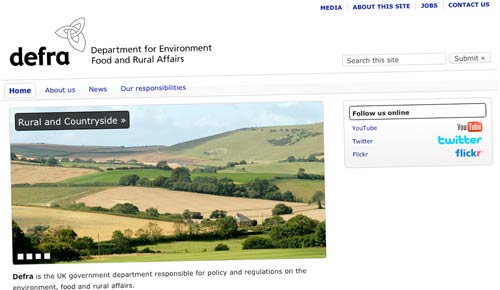There’s a huge amount of information to digest in COI’s ‘Reporting on progress: government websites 2009-10‘, published this morning. It lists, for virtually every government department, an assessment of staff numbers, staff and non-staff spending, page views and unique users, and where available, outcomes of user surveys, and assessments of accessibility and standards compliance.
Inevitably, there are some scarily large numbers contained within. For example:
-
BusinessLink, one of government’s three super-sites, quotes a £35,000,000 spend on ‘non-staff costs’ – accounting for 27% of the total spend as outlined in the report.
- There’s no hint of the super-sites approach leading to economies of scale. BusinessLink, Directgov and NHS Choices spent £4m, £5m and £6m respectively on ‘design and build’, way beyond the biggest-spending ministerial departments (FCO and DH).
-
HMRC appears to have 111 people working at least half their time on its hmrc.gov.uk website, costing £7,500,000.
- Across all departments quoted in the report, we appear to be paying £23,840,000 per year for web hosting.
However, despite COI’s best efforts, I’m still not convinced that the numbers are directly comparable. On hosting, for example, many departments quote £0 – but I’m pretty sure they’re paying for it somewhere. I’m not aware of too many departmental sites built on Blogger, WordPress.com or Geocities.
Some of the most encouraging news comes from the customer satisfaction reports from certain sites – although it’s a pity these numbers only cover half the departments in the study, with HMRC and BusinessLink being obvious omissions. The much-derided Transport Direct claims to have 1.2 million unique users in the average month, with a net customer satisfaction rate of +84%, scoring particularly highly for ease-of-use and design (!). DFID scores +79, Directgov scores +73, as does the MOD.
Other departments, sadly, don’t fare so well. DWP and Transport both show negative numbers for net customer satisfaction: -8% and -1% respectively, with very high %s of people finding ‘none of what I wanted’. I’m wondering if those measures are fair on them, though? – it seems odd with Transport Direct and (I’m guessing) JobCentrePlus, now a major part of Directgov, doing so well. And it must be a bit embarrassing for COI to rank so low in their own study, on an area where they are tasked with setting best practice (12% net satisfaction).
Like it or not, the raw traffic numbers are likely to be the main source of amusement. Predictably, the super-sites come top on all measures; but there’s a suspiciously strong showing for The National Archives, whose opsi.gov.uk site appears to be claiming to have more than 1m unique users every month. Again, BusinessLink‘s numbers stand out, reporting much lower traffic levels than their fellow super-sites. There’s also wide variety in the number of page views per visitor, and monthly visits per unique user, which might merit further investigation.
As with any dataset, it’s a mixed picture. The biggest questions, I think, are over the £23m hosting bill – and that’s unquestionably an understatement, when you consider the number of departments who quoted zero for hosting; and the value-for-money of BusinessLink.
But as with any dataset, there’s a huge risk of misinterpretation of its contents – and I wouldn’t necessarily guarantee that any of the above analysis is either true or fair. Data is good at asking questions, but rarely gives clear answers.
There’s a press release from the Cabinet Office; but to be honest, I wouldn’t bother with it.
Disclaimer: I do web stuff for lots of different bits of government. Many of the departments named above are past or present clients.


